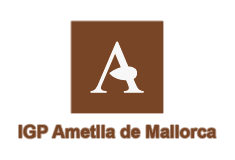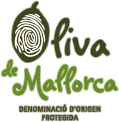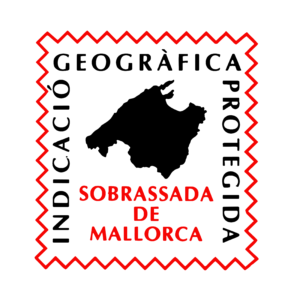Livestock farming has been a fundamental activity in Mallorca since ancient times, playing a crucial role in the island’s economy and culture. Although the sector has undergone significant changes over time, adapting to modern demands and local conditions, it remains an essential part of the Mallorcan landscape and its rural identity.
01
02
03
History
Origin
Places
04
05
06
Stories
Products
Related
The history of meat in Mallorca is a fascinating story that is intertwined with the evolution of the island over the centuries. Since prehistoric times, livestock has been a fundamental activity in Mallorca, providing meat, milk and other products essential to the subsistence of its inhabitants. The first settlers of the island raised goats, sheep and pigs, laying the foundations of a meat tradition that would be enriched with the arrival of different cultures throughout history.
The influence of the Romans, Arabs and Christians brought with them new breeds of livestock and production techniques, diversifying the supply of meat and derived products. In the Middle and Modern Ages, the Mallorcan black pig, a breed native to the island, acquired great importance in the production of meat and sausages. Its meat, appreciated for its flavor and quality, was used to make emblematic products such as sobrassada, camaiot and butifarrón.
Meat and meat products from Mallorca became important trade goods, being exported to other regions of Spain and the Mediterranean, consolidating the island’s reputation as a producer of quality foodstuffs.
In recent decades, there has been an effort to recover and promote the breeding of the Mallorcan black pig and other traditional meat products of the island.
The creation of the “Carne de Mallorca” seal has been fundamental in guaranteeing the quality and origin of the meat produced on the island, giving consumers the assurance that they are purchasing an authentic, high quality product.
The history of meat in Mallorca is a testimony to the island’s capacity for adaptation and resilience in the face of challenges. Despite changes and difficulties, Mallorca’s meat tradition is still alive, evolving and adapting to new market demands and trends, maintaining its essence and its commitment to quality and flavor.
The Porc Negre Mallorquín, also known as the Mallorcan black pig, is a breed of pig native to the island of Mallorca, the result of centuries of adaptation to the climate and resources of the Mediterranean. This breed, characterized by its black coat, large, droopy ears and robust body structure, has been an integral part of Mallorcan culture and cuisine for centuries.
Traditionally, these pigs were fed on the island’s natural resources, such as acorns, figs and cereals, which contributed to the exceptional quality of their meat and fat. Porc Negre meat is prized for its intense flavor, juiciness and texture, while its fat, rich in monounsaturated fatty acids, is a key ingredient in the production of traditional Mallorcan sausages.
Porc Negre has been fundamental in the elaboration of emblematic products such as sobrasada, camaiot, butifarrón and xua, recognized for their unique flavor and quality, and are part of the island’s gastronomic heritage. In addition to sausages, Porc Negre meat is used in various typical Mallorcan dishes, such as “frito mallorquín” or “arròs brut”.
In the mid-20th century, the breed was in danger of extinction due to the introduction of foreign breeds and diseases. However, thanks to the efforts of breeders and associations, the breed was recovered and its genetic heritage preserved. In 1996, the sobrasada made with Porc Negre Mallorquín meat obtained the Protected Geographical Indication (PGI), guaranteeing its origin and quality.
The breeding of Porc Negre and the production of sausages and other derived products generate employment and contribute significantly to the local economy, especially in rural areas of Mallorca. In addition, the local gastronomy, which includes sausages and dishes made with Porc Negre meat, is an attraction for tourists visiting the island, boosting gastronomic tourism.
Mallorcan lamb is an emblematic product of the island’s gastronomy, appreciated for its mild flavor, juiciness and tenderness. Raised in the unique conditions of the Mediterranean climate and fed on local pastures, this lamb develops organoleptic characteristics that distinguish it from other varieties. Although there is no native Mallorcan breed of sheep, the Mallorcan lamb is a breed adapted to the island’s environment and recognized for its hardiness and ability to take advantage of natural resources.
Feeding on mother’s milk and local pastures contributes to the characteristic flavor and quality of Mallorcan lamb meat, which is tender, juicy and with a mild and delicate flavor, slightly sweet and with herbaceous notes. Although it does not have a protected designation of origin, Mallorcan lamb is identified by its origin and quality, being a highly valued product by local consumers and tourists.
In Mallorcan cuisine, lamb is used in a variety of dishes, from the traditional roast lamb, especially popular in celebrations and festivities, to “frituras de cordero” or “arròs brut”. Mallorcan lamb is part of the island’s culinary tradition, being present in many typical dishes and festivities, and its breeding contributes to the local economy, generating employment and boosting rural areas. In addition, the local gastronomy, which includes dishes with Mallorcan lamb, is an attraction for tourists visiting the island, contributing to the development of gastronomic tourism.
The native goat of Mallorca, known as “Cabra Mallorquina” or “Boc”, is a goat breed that has found its home on the island for centuries. This goat, although not native to Mallorca, has adapted perfectly to the Mediterranean climate and the rugged terrain of the island, developing unique characteristics that distinguish it from other breeds. It is a hardy, agile animal capable of taking advantage of the natural resources available, with a short, dense coat, long, curved horns and strong legs.
It is common to spot these goats while traveling through the Serra de Tramuntana, either on mountain trails or even from the roads. Their presence has become so common that they have become a symbol of the local fauna, and their silhouette silhouetted against the mountainous landscape is an iconic image of the island.
However, in recent decades, the abandonment of traditional livestock farming and the decline in demand for goat products have led to a decrease in control over goat populations in Mallorca. This lack of control has allowed goats to reproduce without restrictions, which has led to a significant increase in their population in some areas of the island.
The overpopulation of goats has generated environmental problems, such as overexploitation of natural resources, soil erosion, and loss of biodiversity. In addition, goats can cause damage to crops and native vegetation, leading to conflicts with farmers and landowners.
To address this issue, goat population control measures, such as trapping and culling, have been implemented. However, these measures have been controversial and have generated debate between animal welfare advocates and those seeking to protect the environment and agriculture.
This ancestral practice, which dates back centuries, consisted of capturing wild goats using a lasso skillfully thrown by hunters. Although now banned, this technique was a means of subsistence and control of the goat population in the mountainous area of the island.
Hunting goats with a snare required great skill and knowledge of the terrain. Hunters, often local shepherds, would go deep into the Serra de Tramuntana in search of wild goats. Once a goat was located, the hunter would sneak up on it and throw the lasso with precision, trying to entangle the animal’s legs to immobilize it.
This practice, although risky and controversial, was part of the culture and tradition of the Serra de Tramuntana. Hunters were respected for their skill and knowledge of the environment, and the goat meat obtained was an important source of food for local communities.
Eventually, goat lasso hunting was banned due to concerns about animal welfare and conservation of the species. However, this anecdote remains a reminder of the historical relationship between the inhabitants of Mallorca and the island’s wildlife, as well as the traditional practices that have shaped the region’s culture and identity.
Get to know the daily life of Mallorcan producers
If you like
, you’ll love these products
Sign up for our newsletter and every month you will receive the most fascinating and surprising stories about the traditions of Mallorca, directly from the voice of our producers. Discover the unique and personal experiences that make each product a story.
Get to know the daily life of Mallorcan producers
Get to know the daily life of Mallorcan producers

The place for local products from Mallorca
Palma de Mallorca
sales@mallorcamade.com
+34 658907615
Mallorca Made is the meeting point between the cultural richness of Mallorca and the international community. Mallorca Made offers international customers not only a place to explore the rich variety of products this island has to offer, but also an account of the history and stories behind each creation.
We pride ourselves on being catalysts of local commerce, promoters of the authenticity and tradition of Mallorca, taking its essence beyond the sea that surrounds us.
Discover, connect and celebrate with us the unique identity of our island.








© 2024 Amara, ingeniería de marketing | All rights reserved | Digital strategy: Amara, ingeniería de marketing